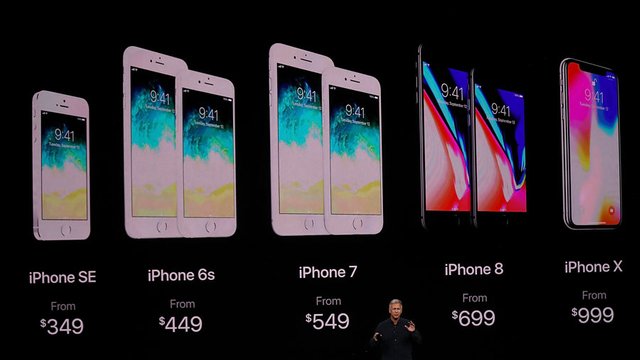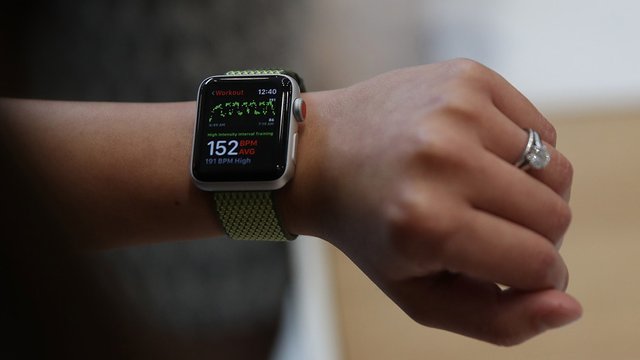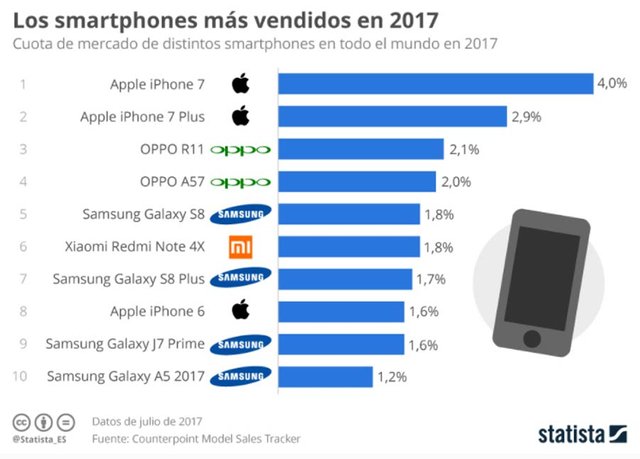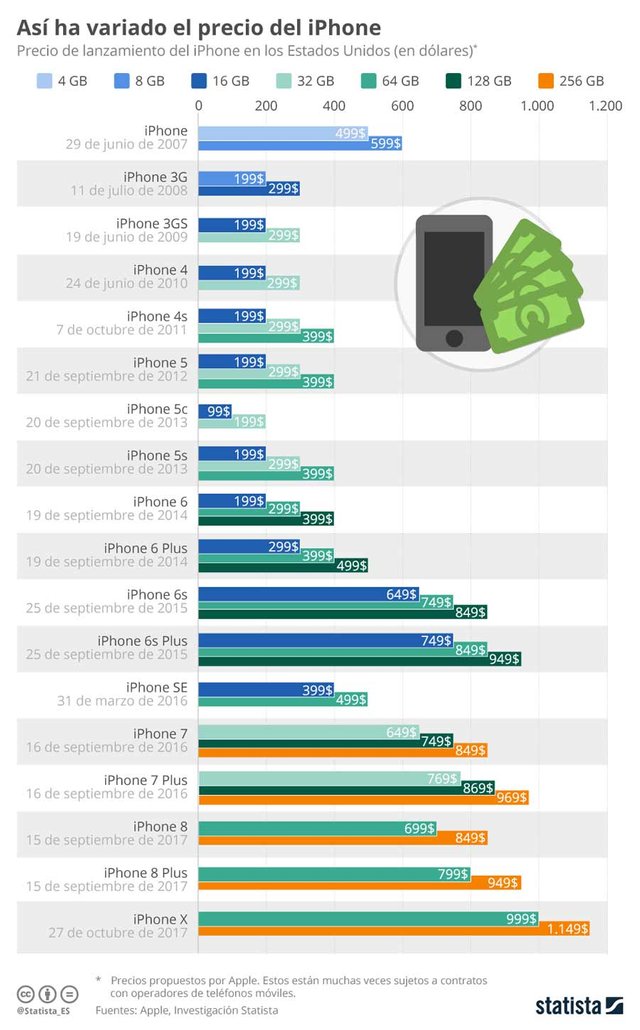The iPhone revolution, 10 years later//La revolución del iPhone, 10 años después

It seems Steve Jobs has never left. The iPhone turned ten on June 29, after the first generation of this device hit stores, a period in which US technology giant Apple has sold more than a billion units of its flagship product.
Of course, it does not land in a market with little competition, according to experts, but rather the opposite.
Ten years seems little, but if we look back, events occurred that marked the world, not only for the presentation of this smartphone for the first time, but for the financial crisis that occurred in the United States because of toxic mortgages, which ended in a global ruin.
That's why days, Briton Lewis Hamilton debuted at McLaren and became the first man of color to participate as a driver in Formula 1.
Spider-Man 3 opens with little success in the halls of the world and King Juan Carlos of Spain, instead, becomes a social phenomenon when asked the late President of Venezuela, Hugo Chávez, why do not you shut up? during the Ibero-American Summit of Heads of State, in Santiago, Chile.
Steve Jobs, however, had a lot to talk about, to talk about and to talk about. Ten years after the launch of its iconic iPhone smartphone, Apple unveiled its new iPhone 8 (iPhone 8 Plus and iPhone X) models, which officially premiered Apple Park, the technology giant's new campus.
Pareciera que Steve Jobs nunca se ha ido. El iPhone cumplió diez años el pasado 29 de junio, después de que la primera generación de este dispositivo llegara a las tiendas, un período en el que el gigante tecnológico estadounidense Apple ha vendido más de mil millones de unidades de su producto estrella.
Eso sí, no aterriza en un mercado con poca competencia, según los expertos, sino más bien todo lo contrario.
Diez años parece poco, pero si vemos hacia atrás, se dieron sucesos que marcaron al mundo, no solo por la presentación por primera vez de este teléfono inteligente, sino por la crisis financiera que se dio en Estados Unidos por culpa de las hipotecas tóxicas, que terminó en una ruina global.
Por eso días, el británico Lewis Hamilton debutó en McLaren y se convirtió en el primer hombre de color que participa como piloto en la Fórmula 1.
Spider-Man 3 se estrena con poco éxito en las salas del mundo y el rey Juan Carlos de España, en cambio, se vuelve un fenómeno social cuando le preguntó al extinto presidente de Venezuela, Hugo Chávez, ¿por qué no te callas?, durante la Cumbre Iberoamericana de Jefes de Estado, en Santiago de Chile.
Steve Jobs, sin embargo, tenía mucho por hablar, de qué hablar y hacer hablar. Diez años después del lanzamiento de su icónico teléfono inteligente iPhone, Apple presentó sus nuevos modelos de iPhone 8 (iPhone 8 Plus y iPhone X), en un acto que, además, estrenó oficialmente Apple Park, el nuevo campus del gigante tecnológico.

In 1996, when Steve Jobs, cofounder of the computer company Apple, returned to its origins and took office in the presidency of its board of directors, very few bet for the future of the company.
The iPhone has marked for much of the decade the advance of a millionaire and innovative industry.
This supposed miracle has been based on the success of three technological developments that have placed the Apple brand as a reference for good taste, innovative design and state-of-the-art technology: iPod music player, iPhone phone and iPad tablet.
On January 9, 2007, the iPhone came to light with the ambition to reinvent mobile telephony and the aspiration to "make history".
"Today we are going to do some history ... We present three revolutionary products: an iPod with touch controls, a revolutionary mobile phone and an advanced internet connection. There are three different devices, it is only one and we have called it iPhone, "said Apple CEO Steve Jobs.
Months later, on June 29, the first iPhone, only compatible with AT & T, went on sale, for $ 499 in the most economical version.
The new device had 4GB of memory and a touch screen - 3.5 inches, 8.89 centimeters - that made forget the traditional keyboard of the usual mobiles in the market. Jobs did not hesitate to predict that the iPhone, with which it was easy to interact, would reinvent technology and the market.
En 1996, cuando Steve Jobs, cofundador de la compañía informática Apple, volvía a sus orígenes y tomaba asiento en la presidencia de su consejo de administración, muy pocos apostaban por el futuro de la empresa.El iPhone ha marcado durante buena parte de la década el avance de una industria millonaria e innovadora.Este supuesto milagro se ha sustentado en el éxito de tres desarrollos tecnológicos que han colocado a la marca Apple como referente del buen gusto, del diseño más innovador y de la tecnología de vanguardia: el reproductor musical iPod, el teléfono iPhone y la tableta iPad.El 9 de enero de 2007, el iPhone vio la luz con la ambición de reinventar la telefonía móvil y la aspiración de “hacer historia”.“Hoy vamos a hacer algo de historia(…) Presentamos tres productos revolucionarios: un iPod con controles táctiles, un teléfono móvil revolucionario y un dispositivo avanzado de conexión a internet. No son tres dispositivos distintos, es uno sólo y lo hemos llamado iPhone”, anunciaba el entonces consejero delegado (CEO) de Apple, Steve Jobs.Meses más tarde, el 29 de junio, el primer iPhone, únicamente compatible con AT&T, se puso a la venta, por 499 dólares en su versión más económica.El nuevo dispositivo contaba con 4GB de memoria y pantalla táctil -de 3,5 pulgadas, 8,89 centímetros-, que hacía olvidar el teclado tradicional de los móviles habituales en el mercado. Jobs no dudó en predecir que el iPhone, con el que resultaba sencillo interactuar, reinventaría la tecnología y el mercado.

New Apple Watch Series 3 is shown at a special event at the Steve Jobs Theater.
Nuevo Apple Watch Series 3 es mostrado en un evento especial en el Teatro Steve Jobs.
--------------------------------------------------------------------------------------------------------------------------------------
The iPhone, which caused a collective hysteria among its users, was confirmed as a project as groundbreaking as the Macintosh in 1984 or the iPod in 2001.
It was a rectangular device, with a touch screen, no physical keyboard or mouse, with internet connection and camera. The key to its success, according to experts, was the combination of all its elements, both hardware and software, in a device very easy to use.
It succeeded in revolutionizing the way we interact with information. The iPhone meant bringing a small personal computer to everyone, a terminal that allowed to be always connected to different services and all kinds of information online.
And it was not only revolutionary for hardware or touch screen, but also introduced a completely new ecosystem, that of applications. It opened the possibility to create services through its applications to all the world.
The fit between hardware and software, which sought to provide a simple and accessible user experience, has been another key to the success of the phone.
El iPhone, que provocó una histeria colectiva entre sus usuarios, se confirmaba como un proyecto tan rompedor como lo fue el Macintosh en 1984 o el iPod en 2001.Era un dispositivo rectangular, con pantalla táctil, sin teclado físico ni ratón, con conexión a internet y cámara de fotos. La clave de su éxito, según los expertos, fue la combinación de todos sus elementos, tanto de hardware como de software, en un aparato muy sencillo de utilizar.Consiguió revolucionar la manera en la que interactuamos con la información. El iPhone supuso llevar un pequeño ordenador personal a todo el mundo, un terminal que permitía estar siempre conectado a distintos servicios y a todo tipo de información en línea.Y no sólo fue revolucionario por el hardware o la pantalla táctil, sino que, además, introdujo un ecosistema completamente nuevo, el de las aplicaciones. Abrió a todo el mundo la posibilidad de crear servicios a través de sus aplicaciones.El encaje entre hardware y software, que buscaba ofrecer una experiencia de usuario sencilla y accesible, ha sido otra de las claves del éxito del teléfono.

That first iPhone came at a time when the market was dominated by BlackBerry and Microsoft devices. But the real breakthrough came when Apple devised in 2008 for its iOS operating system the App Store, which allows developers to manufacture and distribute their own applications.
In October 2012, a new version of the iPhone 4, called 4S, came out seven times faster than the original model.
True to its dynamics, Apple introduced a year later the iPhone 5S and iPhone 5C, which brought more colorful and better cameras to the smartphone sector.
In April of 2015, AppleWatch came out, a new device with which the company intended to give a good bite to the emerging market of "wearable" (dressables).
Just a year ago, the iPhone 7 was introduced and now, this September, Apple fans are waiting for the new iPhone 8.
In June, Apple, the company with the largest stock market capitalization in the United States, reported that in the second quarter of its fiscal year ending April 1, it sold 50.76 million of those devices, less than 51 , 2 million iPhones sold in the same period of the previous year.
Aquel primer iPhone llegó en un momento en el que el mercado lo dominaban las BlackBerry y los dispositivos de Microsoft. Pero el verdadero avance llegó cuando Apple ideó en 2008 para su sistema operativo iOS la App Store, que permite a los desarrolladores manufacturar y distribuir aplicaciones propias.En octubre de 2012, salió una nueva versión del iPhone 4, llamado 4S, siete veces más rápido que el modelo original.Fiel a su dinámica, Apple presentó un año después el iPhone 5S y el iPhone 5C, que aportaron más colorido y mejores cámaras al sector de los teléfonos inteligentes.En abril de 2015, salió el AppleWatch, un nuevo dispositivo con el que la compañía pretendía dar un buen mordisco al mercado emergente de los “wearable” (vestibles).Justo, hace un año, se presentaba el iPhone 7 y ahora, este mes de septiembre, los seguidores de Apple esperan los nuevos iPhone 8.El pasado junio, Apple, la compañía con la mayor capitalización bursátil de EEUU, informó de que en el segundo trimestre de su ejercicio fiscal, que terminó el 1 de abril, vendió 50,76 millones de esos dispositivos, una cantidad inferior a los 51,2 millones de iPhones vendidos en ese mismo periodo del año anterior.
